Introduction to Sedum
Welcome to the enchanting realm of sedums, the veritable chameleons of the succulent world! If you’ve ever wandered through a garden and stumbled upon a plant that is both resilient and ravishing, chances are it was a sedum. These perky plants come in an array of forms, from upright sentinels to ground-hugging carpets that crave nothing more than to thrive with minimal fuss. Let’s embark on a journey through the sedum spectrum, discovering the tricks of the trade to distinguish these hardy gems.
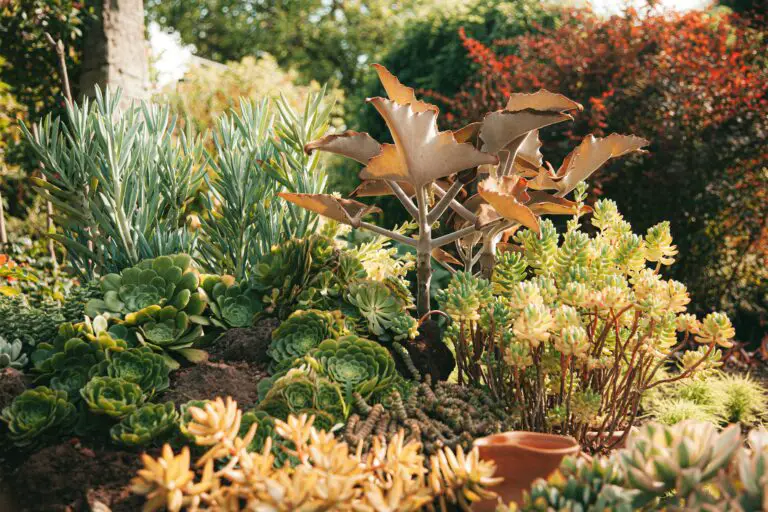
Consider the vivacious ‘Autumn Joy’ variety, a garden favorite that stands tall, its broccoli-like buds bursting into starry blooms as summer wanes. Alternatively, picture the stonecrop sedum, its plump leaves forming a plush tapestry underfoot, an enduring green against the cold kiss of winter. Each variant flaunts unique characteristics, ensuring there’s a sedum for every corner of your garden theater.
Identifying sedum is a delightful puzzle, with pieces shaped by leaf form, flower color, and growth habit. Let’s turn on our detective mode! Those thick, succulent leaves that store water for drought days? A signature sedum clue. And what about those clusters of petite, star-shaped flowers? A telltale sedum bloom parade, ready to entice pollinators from near and far. Observation is your ally in the identification game, so keep your eyes peeled for these distinguishing features.
Now, imagine running your hands through the sedum section at your local nursery, each variety whispering its secrets as you examine their foliage and blooms. With a bit of sleuthing, you’ll soon be on a first-name basis with these tough yet tender succulents. So go ahead, let your garden be graced by the hardy elegance of sedum, as they promise a performance that spans the seasons, asking for so little yet giving back a spectacle of splendor.
Understanding the Sedum Genus
Think of Sedum and imagine a mosaic of fleshy leaves and starry flowers carpeting your garden with vibrant colors. A group of perennials known for their hardiness and drought resistance, Sedum plants are the versatile performers of the succulent world. They belong to the family Crassulaceae, standing out with their ability to thrive in adverse conditions, where most other plants might throw in the trowel.
These botanical wonders possess characteristics that stitch them together into a stunning garden tapestry. From the Stonecrop’s cushioned clusters nestled in rock gardens to the upright Sedum ‘Autumn Joy’ heralding fall with its rich, rosy blooms, these plants share common traits: succulent leaves, a preference for well-draining soil, and a ease of propagation that gardeners adore.
A remarkable example of their resilience and adaptability is the story of a Sedum variety that was just a tiny clipping from a friend’s backyard. With minimal care and water, it not only survived but flourished, weaving a verdant web of life across an otherwise sparse environment. Its success serves as a testament to the tenacity of Sedum plants and their ability to enrich our gardens with minimal fuss.
Now, take a virtual journey to understand more about the , a genus that brings beauty to arid conditions and adds an easy-care flourish to your outdoor living space.
For avid gardeners seeking supplementary insights about caring for these succulents, delving into Sedum Palmeri Splendor: Beauty in Succulent Care can unveil additional guidance, ensuring your Sedum and other succulent friends remain at their peak vibrancy.
Visual Clues for Identifying Sedum
So, you’re strolling through your garden and spot something unusual. It has that succulent vibe – the one that screams “easy-care” and “drought-tolerant”. But isn’t it just another groundcover? Nope, that my friend could very well be a sedum! These nuggets of succulent splendor are not just easy on the eyes but also easy to grow. You’ve seen them somewhere before, haven’t you? Perhaps sprucing up a rock garden or nestled in between stepping stones. Well, let’s get you geared up to identify these versatile beauties with some visual clues.
First things first, the leaves. No two ways about it, these are the heartthrob of the plant. Sedum leaves are typically fleshy, full, and have that distinctive waxy sheen. Spot those jelly bean-like leaves? You’re probably looking at a Sedum rubrotinctum, also known as pork and beans. What about flat, spatula-shaped leaves? That’s likely a Sedum spathulifolium.
Color is your next cue. Sedum foliage isn’t just green; it’s a rainbow coalition. Lime green, deep purple, bright yellow – you name it, and there’s a sedum flaunting it. In fact, ever come across those ground covers turning a lovely bronze in the fall? Bingo, a sedum in seasonal dress!
Let’s not forget the growth habit. Sedums can be ground-hugging charmers or upright attention-grabbers. The creeping ones will make themselves right at home in your garden’s nooks and gaps, while the taller varieties stand proud, some reaching up to a couple of feet. That burst of pink flowers you admired on tall stalks? Classic sedum move!
Blooms are the grand finale – sedums’ star-studded show. They’re like botanical fireworks, small yet unforgettable, and they usually show up just as summer is waving goodbye. They aren’t shy either; sedums will bloom in clusters, drawing pollinators from far and wide. A feast for your eyes and for the bees!
Now, you’re almost a sedum savant, but remember, these visual clues are just part of the story. For a deeper dive into caring for these resilient plants, take a peek at our insights on growing and nurturing a variety of sedum plants.
And because we’re all about showing and not just telling, have a look at this striking specimen:
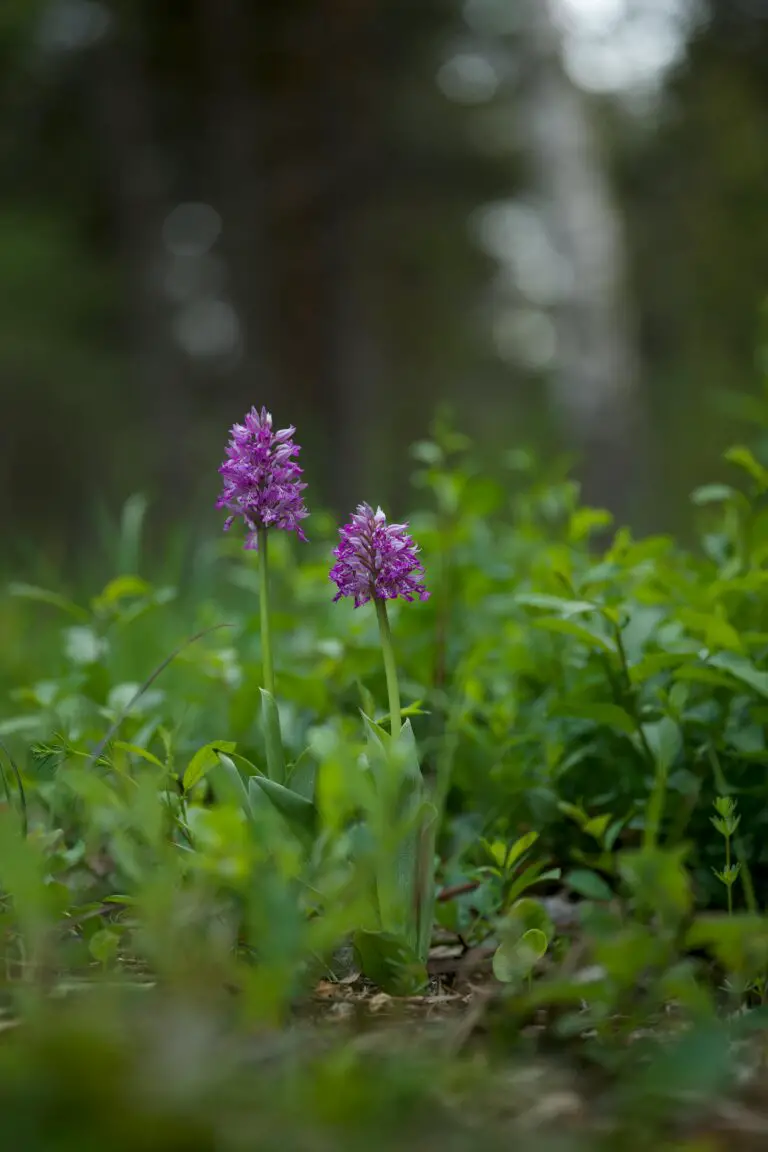
So, there you have it – your mini field guide to spotting sedum in your own backyard. Remember, it’s all in the details: the leaf’s embrace, the color’s tale, and the growth’s journey, culminating in a burst of flowers that could rival the stars. Happy sedum spotting!
Common Sedum Species and Their Traits
Let’s take a botanical stroll and explore the verdant variety of sedum species that could grace your garden with their succulent splendor. From the sun-soaked petals of the Sedum telephium to the frosty fingertips of the Sedum spathulifolium, each sedum brings its own unique touch to the tableau.
Identifying Sedum Spectacle
Imagine you’re wandering through your garden, and your gaze lands on a hardy, low-maintenance troop of plants. These are likely sedums, or “stonecrops,” known for their fleshy leaves and star-shaped blooms. They flaunt a palette ranging from the deepest greens to vibrant reds and are a feast for pollinators when their flowers bloom with gusto.
For example, Sedum reflexum, also known as “Blue Spruce,” gifts your garden with a hint of alpine freshness. Its conifer-like appearance, dusted with a blue-ish hue, pairs impeccably with the fiery orbs of an ‘Autumn Joy’ sedum, which shifts from a warm pink to a rich copper as the season progresses.
Each species holds the secret to its care and keeping, a puzzle for the avid succulent enthusiast. To unlock these secrets, dive into a comprehensive guide on sedum care that details just how to ensure your sedums thrive, unfurling their succulent leaves to the sun’s embrace.
Stonecrop Sampler
Away from the textbooks, real-life gardens act as living encyclopedias. Take the Sedum rupestre, with its silvery foliage, which cascades elegantly from hanging baskets like a waterfall of moonlight. Or Sedum sieboldii, which circles through shades of blue and pink like the sky at dawn, its scalloped leaves a perfect perch for morning dew.
Succulent care is a craft, and sedums are masterpieces in the making. For those who seek to nuture these sculptural beauties, perusing resources such as “The Ultimate Guide to Succulent Care” could be your gateway to gardening success.
Now that you’ve been acquainted with some of the common sedum species and their traits, let the personality of each variety inspire a sense of wonder and excitement for what you might cultivate in your own green space. Though this journey through sedum species is far from over, the thrill of recognizing these succulent splendors is just beginning.
The Role of Flowers in Sedum Identification
When it comes to pinpointing the particular type of sedum gracing your garden, flowers aren’t just the icing on the cake—they’re the dazzling clues in a botanical whodunit. Imagine each sedum flower as a vibrant fingerprint, unique and telling. Whether you’re strolling through your garden or flipping through a succulent guide, noticing the bloom types and colors is like being handed a magnifying glass on your quest for identification. Let’s delve into the world of sedum flowers, shall we?
Picture this: You’re out in your garden, and your eyes catch a spectacle of delicate star-shaped blossoms clustered together like a constellation in the greenery. These aren’t just any stars; they’re the signature of many sedum species. Each petite flower, when observed closely, can reveal hints about its variety. The ‘Autumn Joy’ sedum, for instance, is no shrinking violet with its bold pink inflorescences that mature to a coppery hue as the season transitions. On the other hand, the ‘Blue Spruce’ sedum’s yellow blossoms shine like tiny suns against icy blue foliage.
But don’t let your identification journey end there. The sedum universe is vast, with flowers ranging from the deep crimsons of ‘Voodoo’ sedum to the snowy whites of ‘White Diamond.’ And if you’re puzzled by a particularly exotic specimen in your neighbor’s yard—fret not! Its fiery red clusters could be the hallmark of ‘Dragon’s Blood’ sedum, a variety that could make you feel like you’ve uncovered a treasure trove of rubies amidst the leaves.
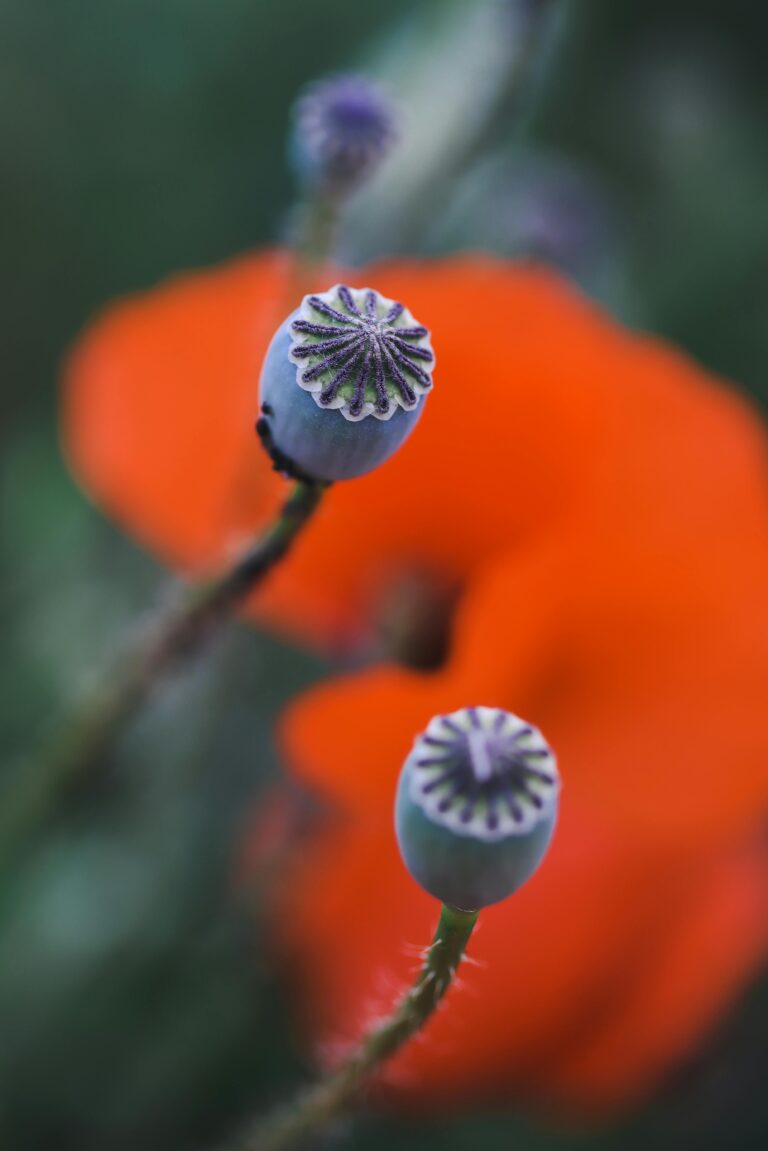
Now, while these flowers put on quite the show, remember they’re not just about good looks. They serve as beacons for bees, butterflies, and other pollinators, weaving your garden into the greater tapestry of the ecosystem. Moreover, by observing the timing and duration of blooms, garden enthusiasts can deduce even more about their sedum’s identity—like pieces of a puzzle falling into place. So next time you’re amidst these spectacular succulents, take a moment to appreciate the floral finery—they’re more than just a pretty face; they’re the key to unlocking the secrets of your sedum’s identity.
Sedum-Specific Growing Conditions
Discovering the perfect growing conditions for sedum isn’t just about cultivating beauty—it’s a crucial step in the sedum identification waltz. These succulent gems have specific preferences that, when met, not only encourage them to flourish but also aid in distinguishing them from their leafy counterparts. So, what’s the secret soil recipe, and how does the sunlight serve on the sedum’s silver platter?
Let’s talk dirt first. Sedum, those hardy perennial stars of the garden, are not fussy about their foundation—they have a profound love for well-drained soil. Imagine your sedum as a miniature mountain explorer, best suited for the rocky, less trodden paths where standing water is a rare sight. It’s their kryptonite! The ideal soil for sedum has a gravelly texture, reminiscent of a well-aerated, gritty mix that allows roots to breathe and prevents soggy feet.
And when it comes to sunlight, sedum plants are the sunbathers of the plant world. Luxuriating in full sun, these succulents crave the spotlight, basking in at least six hours of sunshine a day. It’s their version of a tropical vacation—soaking up rays results in robust growth and vibrant, show-stopping blooms. A sedum tucked away in shade will likely stretch and become leggy, a clear sign it’s reaching for more light, much like a dancer extends for an audience’s applause.
Remember that lanky sedum I mentioned? If spotting a spindly sedum has you puzzled, it may be crying out for more light or signaling over-watered soil. A sedum content in its environment will showcase compact, fleshy leaves—a beacon of ideal growth conditions. As you learn to read these subtle signs, you’ll become more adept at identifying and caring for the various sedum species that may be gracing your garden.
To see sedum in action and get a tangible feel for their growing conditions, check out this engaging video:
Real-life example? You bet! Take ‘Autumn Joy’ sedum, a popular cultivar known for its robust nature. It thrives in a mishmash of pebbles, sand, and loam, demanding minimal water, as its storage savvy leaves retain moisture like a camel in the desert. Full sun is its jam, ensuring it stands tall with deep, broccoli-esque flower heads that morph from a pale blush to a rich cranberry as summer fades into fall.
In essence, by decoding the sedum-specific growing conditions, you’re unlocking a treasure trove of identification insights. You’ll spot the succulent splendors in your garden not just for their charming aesthetics, but also for the remarkable resilience and adaptability that they embody.
Practical Tips for Identifying Sedum in Your Garden
Practiced garden enthusiasts often engage in the delightful pastime of spotting and identifying sedum, those versatile succulents that bring a low-maintenance attitude and an array of forms to gardens worldwide. If you’re yearning to become a savvy sedum spotter, roll up your sleeves and let’s dive into a botanical detective game right in your backyard.
The first clue in our green mystery is the plant structure. Sedum, part of the Crassulaceae family, boasts fleshy leaves that store water, making them thick and sometimes glossy. The leaves hold the secret to the plant’s resilience, allowing it to thrive in dry, challenging conditions. By closely examining the leaves—feeling their texture, noting their shape, and observing their arrangement—you’ll begin to piece together the identity of your sedum.
Comparing your garden guest to common varieties is your next investigative step. ‘Autumn Joy’, with its broccoli-like flower clusters and robust form, might be mingling in your flowerbed, or perhaps it’s the carpet-forming ‘Dragon’s Blood’, its leaves a tapestry of fiery reds. Each variety has distinctive traits: ‘Gold Mound’ sedum sparkles with tiny, yellow-green leaves, whereas ‘Cape Blanco’ sedum stuns with silvery rosettes that charm onlookers. With a bit of research and reference to sedum plant catalogs, unravelling the identity of your specimen becomes an enthralling botanical puzzle.
Remember, the world of sedum is incredibly diverse, so while leaf structure and common comparisons are reliable starting points, don’t be shy to seek out a local nursery or plant enthusiasts for help. Nothing beats the experience of comparing notes and getting insights from fellow plant lovers who’ve had their hands in the soil and their hearts in the garden.
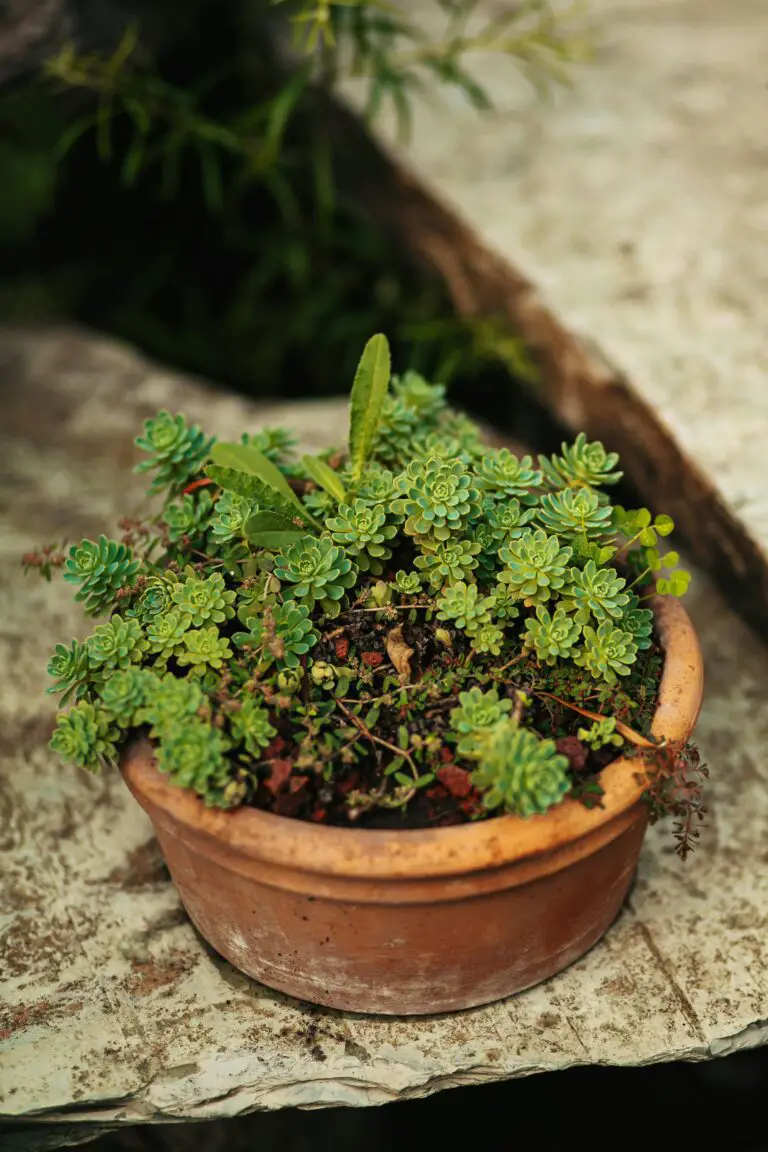
Now, armed with these practical tips, you’re well on your way to identifying the sedum varieties that grace your garden. Observe, compare, and consult—the joy of discovery is at your fingertips. Let every leaf and stem be a clue that leads you deeper into the enchanting world of these succulent splendors.
Leveraging Resources: Books and Online Tools
Embarking on the journey to become a well-versed sedum spotter? Arm yourself with the mightiest of allies – books and digital treasure troves that are jam-packed with wisdom on every leaf and bloom. Imagine unraveling the secrets of your garden’s succulent splendors, leaf by luscious leaf. That’s the power of a well-chosen book or an online database, which are not just references but companions in your quest for sedum identification.
If you’re starting from square one, picture a book that’s been penned by succulent connoisseurs—one that’s teeming with vibrant pictures, pointing out the nuances of rosettes and petals. There’s something magical about flipping through glossy pages, each one promising to equip you with the knack to distinguish between the plump, jubilant jelly bean plant and the cascade of a burro’s tail. And the best part? Your newfound knowledge isn’t just for show; it’s your ticket to nurturing a thriving, show-stopping garden.

For the tech-savvy green thumbs, online resources are the secret ingredients to your growing success. There’s a digital world out there where plant identification apps reign supreme. Snap a picture, and let sleek algorithms trace the genealogy of your mysterious sedum. Join forums or social media groups where you can shoot the breeze with fellow succulent lovers, exchange notes on species like the stonecrop or the alluring dragon’s blood sedum, and find the spotlight varieties that make your heart skip a beat.
Real-life examples abound where these resources have turned ordinary backyard gardeners into bona fide sedum savants. From local book clubs dedicating a chapter a month to study sedum varieties to online communities celebrating ‘Sedum Sundays’ – the resources are more than just guides; they’re catalysts for connection and inspiration within the sedum community.
At this point, it’s clear – your journey to mastering sedum identification doesn’t have to be a solo trek. Let these tried and true books and online tools be the companions that guide your green fingers to greatness. So gardeners, get ready to leaf through knowledge and click your way to confidence!
Navigating Challenges in Sedum Identification
When it comes to distinguishing the glistening jewels of your garden—the sedums—from other succulent contenders, the path is often strewn with a few stumbling blocks. But fret not! With a discerning eye and a sprinkle of know-how, those pitfalls can be adroitly avoided.
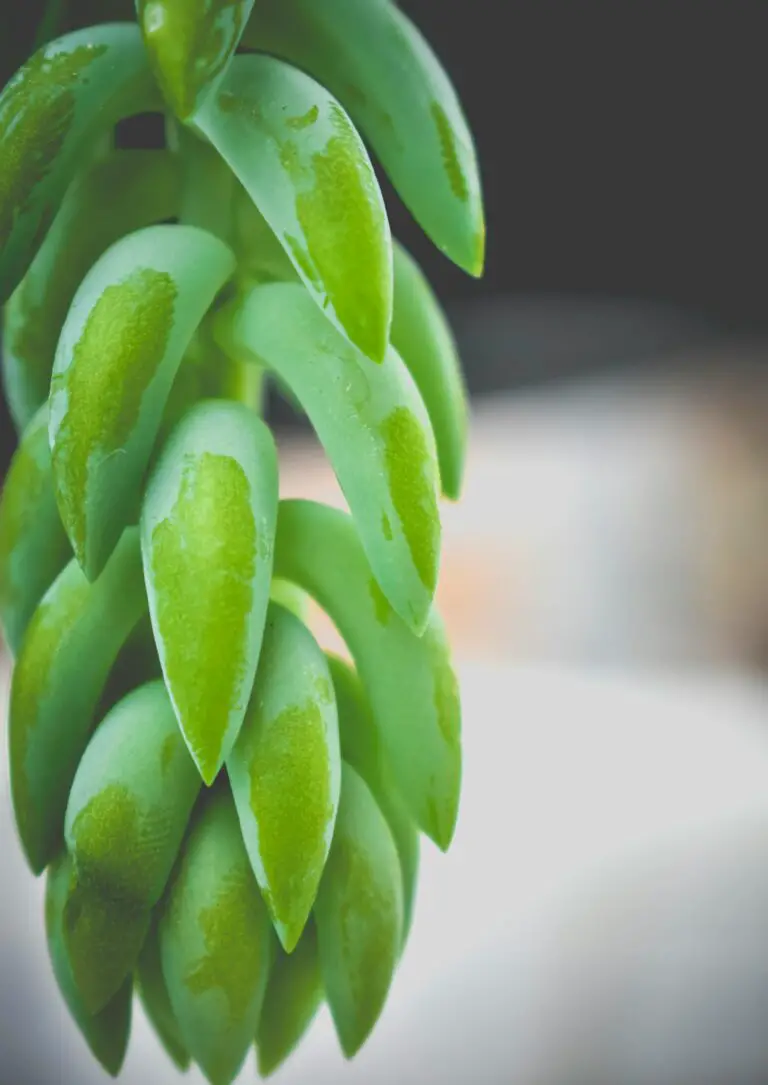
One common misstep is the sedum mix-up, where an enthusiastic gardener, eyes twinkling with the promise of a stunning succulent display, might confuse a sedum for a lookalike such as Graptopetalum or Echeveria. It’s easy to see why—the succulent family tree is vast and varied. Yet, sedums can be spotted by their characteristic thick, fleshy leaves that store water, and their growth habit, which is often more sprawling or upright compared to their relatives.
Another challenge is the vast sedum varieties available, making identification seem like navigating a labyrinth. The key lies in the details: observing the leaf shape, size, and arrangement, as well as the form and color of the blooms. Take, for example, the Sedum reflexum, with its needle-like leaves, compared to Sedum spurium’s broader, spatula-shaped foliage. Subtle distinctions, yes, but crucial for accurate recognition.
Then there’s the seasonal masquerade. Sedums can change color with the seasons, morphing from cool greens in summer to fiery reds and oranges come fall. This chameleon-like behavior is a defense mechanism to protect from the sun’s harsh rays but can lead to identification confusion. Remember, the trick is in the timing—check your sedum’s appearance across different seasons to get a full scope of its identity.
Don’t let these hurdles deter you from enjoying the elegant simplicity of sedums. With a bit of practice and observation, you’ll soon be sidestepping the common errors and rejoicing in the diverse beauty these resilient plants offer to any green space.
The Joy of Collecting Different Sedums
Imagine a hobby that not only tickles your aesthetic fancy but also caters to your nurturing instincts—all packaged neatly in the form of quirky, fleshy plants known as sedums. Picture yourself walking through your garden, a patchwork of textures and colors, your eyes resting on the plump leaves of ‘Autumn Joy’ or the cascading emerald stems of ‘Burrito’. That’s the joy of collecting different sedums—they’re like living sculptures, ever-changing with the seasons and so delightfully tactile that you can’t help but reach out and touch them.
Collecting sedums is like embarking on a treasure hunt, where each find—an uncommon species from a tucked-away nursery or a serendipitous discovery at a local plant swap—adds a distinctive touch to your succulent mosaic. Your pursuit is more than just amassing varieties; it’s about the stories behind each plant: the ‘Cape Blanco’ that endured a harsh winter, the ‘Dragon’s Blood’ that started as a tiny cutting from a friend, or the ‘Vera Jameson’ that now sprawls majestically across a sun-drenched rock.
This pursuit is not just about aesthetics, either. It’s a journey of education and experience, as every sedum has its tale, and learning to identify them is part of the fun. Perhaps you’re regaling friends with the succulent’s Latin moniker or boasting of its origins while the plant itself sits plump and content in its pot, gracing your garden with a silent flourish of greenery.
And let’s not forget the delight of propagation! With the snip of a stem or the gentle tease of a rosette, you’re on your way to expanding your assortment. Sedum collecting becomes a shareable passion, as cuttings change hands among enthusiasts, each snippet with the potential to grow into a full-fledged specimen in another’s collection, spreading the succulent joy.
With each new addition, you’re not just planting a sedum; you’re weaving a narrative of resilience and beauty, a living anthology of succulent splendors that mark the milestones of your horticultural endeavors.

Conclusion: Cultivating Your Succulent Savvy
By now, you’ve navigated the diverse world of Sedum—those hardy, drought-resilient jewels gracing gardens with their myriad forms and colors. Amid this journey, you’ve armed yourself with the essentials of identifying these succulents, distinguishing between species such as the ground-hugging ‘Goldmoss’ and statuesque ‘Autumn Joy’. You’ve pored over leaf shapes, inflorescence patterns, and the all-important growing habits that set varied Sedum species apart.
Equipped with this knowledge, your foray into the garden metamorphoses into a treasure hunt—a quest to spot the seductive whispers of Sedum along pebble paths and in sun-dappled nooks. Imagine deciphering the language of their leaves, engaging in a vibrant dialog with every rosette and blossom, decoding nature’s own masterpiece in your backyard anthology.
Transform this chlorophyll-filled chronicle into your canvas, celebrating the art of Sedum identification by cultivating an eclectic collection. Each plant a character, each variety a story, with your garden serving as the stage for an ever-unfolding botanical saga. Invite friends, family, and fellow plant enthusiasts to witness the succulent splendor you’ve nurtured, blending education with enchantment as you showcase the subtleties of Sedum.
As the seasons cycle, so too will your expertise flourish, rooting deeply in the fertile soil of experience and branching out with each new encounter. Envisage the thrill, the pure botanical bliss, as your thumb turns greener and your garden grows ever more vibrant with the unique tapestry of Sedum varieties you’ve learned to identify and cherish.
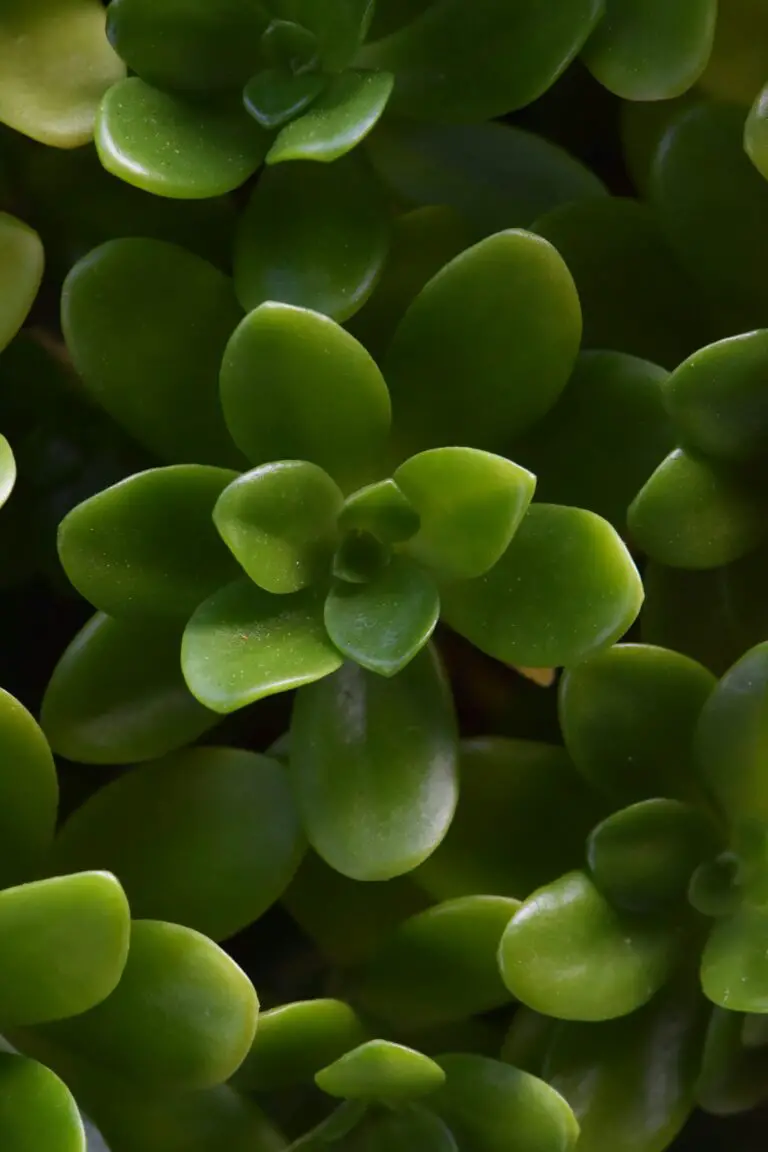
Let these concluding thoughts serve as both a culmination of your learning adventure and a launching pad for your continued exploration. Sidle up to Sedum, and with every glance, gesture, and growth, refine your recognition skills. The garden beckons, and with it, endless opportunities to apply, enjoy, and share your blossoming aptitude for identifying Sedum’s succulent splendors.
Frequently Asked Questions
Discovering the secrets of sedum spells success for suave succulent specialists. Let’s dive into the nitty-gritty of what makes these drought-dodging dazzlers such a hot topic among green-thumbed enthusiasts.
What’s the ABC of Sedum Care?
Imagine a plant that shrugs off neglect like water off a duck’s back—that’s sedum. These stoic stunners love a good sunbake and prefer their soil more on the dry side. Do you overwater? Sedum’s gonna give you the cold shoulder—waterlogged roots are a big no-no. Instead, think of watering as a rare treat; make ’em thirsty, then quench their thirst, deeply and occasionally.
Propagating Sedum: How’s It Done?
It’s like a magic trick—you take a piece, pop it in the right spot, and presto, a new plant appears. With sedum, you simply snip a stem or pluck a leaf, let it callus over for a day or two to prevent rot, then settle it into the soil. Keep it slightly moist, and you’ll soon have baby sedums sprouting with gusto. Some enthusiasts even joke that you can drop a piece on the ground, and it’ll grow—don’t take them too seriously, but it’s not far from the truth.
Unwanted Guests: Managing Pests
You might think these robust plants are impervious to pests, but think again. Mealybugs and aphids find them as irresistible as we do. The key? Be vigilant! A keen eye spots the subtle signs early—a white cottony mass or tiny terrors clustering on your plant. Nip it in the bud with a swift spray of insecticidal soap or neem oil. Remember, prevention is easier than cure, so keep those succulents strong and less appealing to pests.
Eco-Friendly Sedum: Why Are They Eco-Champs?
Not only do these succulents save you on the water bill, but they’re also pros at inviting pollinators to the party. Bees buzz over their blooms; butterflies are drawn like magnets. Moreover, sedum’s hardiness means fewer chemicals needed to keep them happy—a win for you and Mother Nature. They’re like living green roofs, absorbing rain, reducing runoff, and giving urban wildlife a helping hand. Who knew a plant could be such an eco-warrior?
Let’s bring this vivo vision into view with a visual aid. Kick back and enjoy this clip on sedum aftercare and propagation, seasoned with garden unboxing excitement:
Armed with these green-thumbed goodies, you’re well on your way to becoming a sedum whisperer. Remember, practice makes perfect—get your hands dirty and your garden will soon be a sedum sanctuary!



